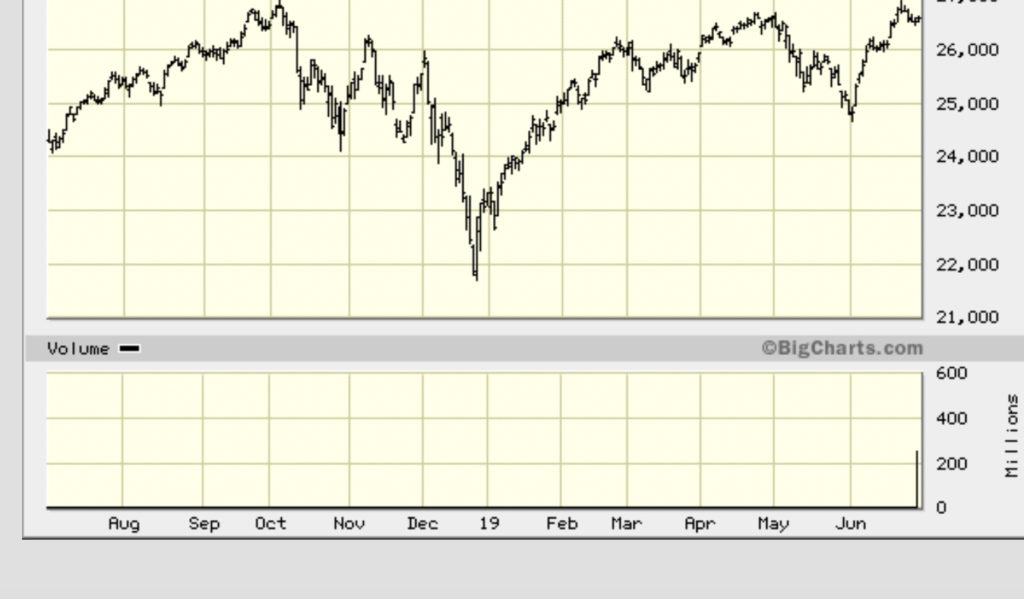So, I did say my “worst-case scenario” did not seem like the most likely scenario to play out from the G-20 summit. Now we know my “best-case scenario” and most likely scenario is the one Trump and Xi have chosen, but what does that mean for the month of July?
Here was the best-case scenarioXi and Trump agree to come out of their meeting sounding like there is hope for a future agreement soon (albeit with nothing specific that has been agreed upon). We all know there is no chance they come out with a deal. So, the best hope is they come out with Trump talking (again) like a deal is imminent and, therefore, he’ll hold off on his tariff increases a little longer. The market feels relief and breaks resoundingly through its eighteen-month ceiling. The remaining indices that have not cleared through their upper barrier manage also to poke through to a new high and manage to hold … for a little while.
In that scenario, I said the next step for the market would likely be that the remaining stock indices that have not pushed past their own previous peaks would now punch through. By that (and I probably should have been clearer originally) I meant those indices like the Dow that were very close to breaking past their old heights, not those like the Russel 2000 and NYSE that are still deep in their bearish zone.
Here sits the Dow trapped at its old summit of nine months ago:

It has remained trapped at this height for a year and a half:

With the Xi summit being something Trump can trumpet about for one or two toots, I would not be surprised to see the Dow break through its past ceiling due to the market’s relief that the G-20 did not result in tariff escalation that had been threatened. However, I also gave a major caveat in my best-case scenario, so hang on:
Then what? All is roses, right? Well, the market has clearly already priced in a trade agreement being reached — also, with apparently 100% certainty — so hope won’t buy a lot more headroom at the market’s top because it’s the same hope that investors have been spending all along. Buybacks are now temporarily frozen out. Even Crazy Cramer is saying the economy looks worse than what the market thinks, He has even stated that, with all of his many executive contacts, he knows of no company that is not going to come in with lower earnings than last quarter. Economic data has been trending down. Forward projections are already being written ahead of any Chinese trade deal, so they won’t likely go up just because, once again, the Trumpet blares an announcement of a trade deal on the horizon. (The market will go up if Trump makes such a proclamation (again), but corporate reports aren’t going to change because of it.)
We would expect that the President now views tariff threats as not only a successful negotiating tactic following the immigration agreement with Mexico but also a useful tool in pressing for looser monetary policy. If so, this suggests that the White House will at least threaten further tariff increases and might follow through with some of them….
